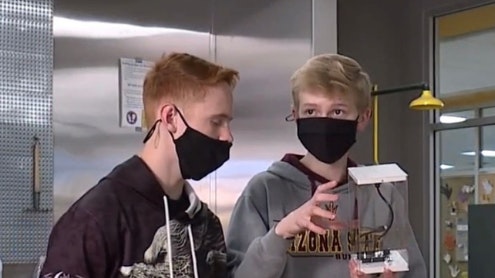Homepage
•
Learning Library
•
Blog
•
NASA Science Project Has Students Sending Sponges Into Space
Expand breadcrumbs
Expand breadcrumbs
- Learning Library
- Blog
- NASA Science Project Has Students Sending Sponges Into Space
- Homepage
- •
- Learning Library
- •
- Blog
- •
- NASA Science Project Has Students Sending Sponges Into Space
NASA Science Project Has Students Sending Sponges Into Space
By Jennifer Snelling
June 1, 2022








